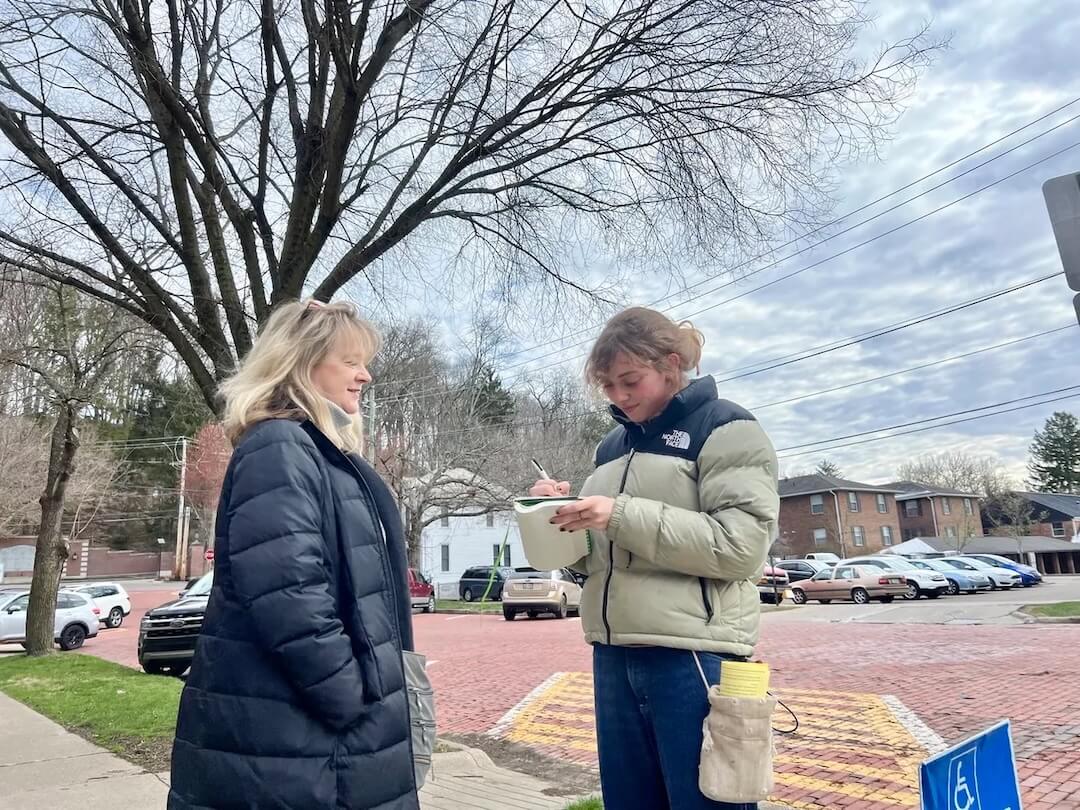“I love to write. But it has never gotten any easier to do and you can’t expect it to if you keep trying for something better than you can do.”
Ernest Hemingway, 1959
Author and journalist Ernest Hemingway received the Nobel Prize for literature on October 28, 1954.
Listen to his acceptance speech:
Ernest Hemingway was a reporter for the Kansas City Star from October 1917 to April 1918.
In 1999, the newspaper’s website created a special section in honor of the 100th anniversary of his birth. This included old stories, various links, anecdotes, and a story titled, “Of ‘Star Style’ and a reporter named Hemingway.”
“And into the midst of The Star staff, in late 1917, came a youth who, when he could get away with it, wore a red and black checkered hunting shirt to work. Old timers frowned on such dress.
But the young reporter worked outside the office most of the time. His name was Ernest Hemingway.
….Ernest Hemingway came to The Star as a big, round-faced boy of 18 with limitless energy, and a desire to be in the thick of the action whether a shooting scrape or chasing ambulances. Hemingway worked at the paper for seven months. In late April 1918, he and Ted Brumback, another Star reporter, joined an ambulance unit in Italy.”
“After returning from World War I, Ernest Hemingway moved to Toronto and began writing for the Toronto Star. He worked there from 1920 to 1924 and some 70 of his articles have been archived online in an attractive new website, the Hemingway Papers. At first Hemingway was a stringer and later he wrote as a staff writer, under the byline Ernest M. Hemingway.
….He went on to write for the Star about boxing and trout fishing and organized crime in Chicago. By 1922 Hemingway had moved to Paris with his wife and sent dispatches that anticipated the themes of the novels that would make him famous.”
— “Archive of Hemingway’s Newspaper Reporting Reveals Novelist in the Making”
Open Culture, May 16, 2012
“During most of the past twelve months, Ernest Hemingway has been reporting the Spanish war for the North American Newspaper Alliance. As we did in our issue of May 5, 1937, we present below selected passages from several of his recent dispatches. They have already been printed in various newspapers affiliated with the Alliance, but such publication has often been incomplete because of lack of space.”
— The Editors, The New Republic, January 12, 1938
“Hemingway Reports Spain”
(Click here for the stories)
Silent color film footage of Hemingway and photojournalist Robert Capa at Mont Saint Michel in France during World War II:
“No American writer is more associated with writing about war in the early 20th century than Ernest Hemingway. He experienced it firsthand, wrote dispatches from innumerable frontlines, and used war as a backdrop for many of his most memorable works.
….In 1944 he returned to Europe to witness key moments in World War II, including the D-day landings. He was 44 at the time and, comparing his photograph on his Certificate of Identity of Noncombatant to the portrait of the young 19-year-old who volunteered in World War I, one notices how distinguished the internationally renowned author had become in those 25 years.
Hemingway accompanied American troops as they stormed to shore on Omaha Beach — though as a civilian correspondent he was not allowed to land himself. Weeks later he returned to Normandy, attaching himself to the 22nd Regiment commanded by Col. Charles ‘Buck’ Lanham as it drove toward Paris (whose liberation he would later witness and write about).”
— “Hemingway on War and Its Aftermath”
National Archives, 2006
And finally, here is a short video biography about the author and journalist Ernest Hemingway.






